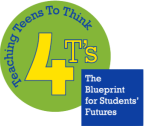People who hold these positions are in charge of operating special imaging equipment in order to capture images or run tests, which are then used by physicians to diagnose patients. Before doing so, however, sonographers and technicians are typically responsible for taking a patient’s medical history and taking any questions about the procedure. Afterwards, they must check their work for quality and accuracy. They usually are capable of determining abnormalities in the images, which they include in their summary to the physician. Diagnostic medical sonographers focus more on images of organs and tissues. They create sonograms or ultrasounds. Cardiovascular technologists and technicians, on the other hand, create images, conduct tests, or assist with surgical procedures involving the heart.
How much would you earn in this position?
In 2012, the median salary for diagnostic medical sonographers was $65,860, with a range from $44,990 to $91,070. For cardiovascular technicians, the median salary was $52,070, with a range from $27,830 to $80,790.
Requirements:
Some skills that will help you to succeed in this career include being detail-oriented and having the ability to interact positively with patients. High levels of concentration are key as well. This type of work will require an associate’s degree or other professional certification. These can be attained from universities or hospital programs, depending on the place of employment and state requirements. Courses may include anatomy, medical terminology, and applied sciences.
Work Conditions:
This type of work usually means being employed by a hospital. However, other settings include physician’s offices and medical and diagnostic laboratories. These facilities are often open evenings, weekends, or overnight, meaning employees might need to work these hours. Forty hour work weeks are typical. Some positions may require workers to be on call.
-Samantha Phillips
What interests you about this career? What other information would you like to know about it?
Sources:
www.bls.gov/ooh/healthcare
explorehealthcareers.org/en/Career/30/Cardiovascular_TechnologistTechnician

 RSS Feed
RSS Feed